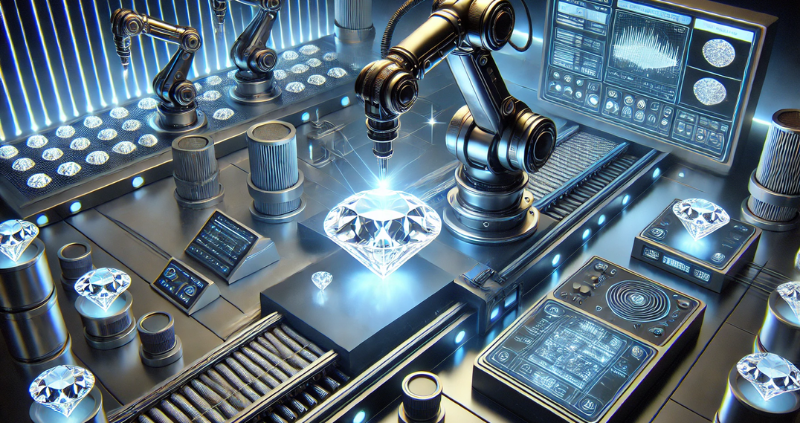Diamond Manufacturing 2.0: How Robotics and Automation Are Shaping the Future

The diamond industry, long rooted in tradition and craftsmanship, is undergoing a sparkling transformation. As technological innovations continue to redefine manufacturing processes across various sectors, diamond production is no exception. Welcome to Diamond Manufacturing 2.0, where robotics and automation are setting a new standard in precision, efficiency, and sustainability.
The Shift from Manual to Machine
Historically, diamond cutting and polishing have been painstakingly manual processes. Skilled artisans would spend hours—sometimes days—perfecting each stone. While this human touch added uniqueness to every diamond, it also left room for inconsistencies and inefficiencies.
Today, robotics and automation have introduced a level of accuracy and consistency that was once unimaginable. Advanced machines powered by artificial intelligence (AI) and computer softwares now handle the complex task of cutting diamonds with microscopic precision. These tools not only reduce human error but also minimise material waste, leading to more sustainable practices in diamond production.
Enhanced Precision with AI and Robotics
One of the most transformative technologies in modern diamond manufacturing is the use of laser-cutting robotics. These machines use AI to analyse rough stones, determining the best way to cut them for maximum value and minimum loss. The result? More brilliant, perfectly proportioned diamonds with less waste.
Robots can also automate the polishing process, ensuring each facet is cut to the exact angle needed for optimal light reflection. This means more sparkle, more uniformity, and higher-quality finished products.
Moreover, AI-powered imaging systems can scan a diamond in seconds and detect imperfections invisible to the human eye. This has revolutionised the quality control process, enabling manufacturers to meet stricter standards and consistently deliver flawless stones.
Speed Meets Scalability
Robotics and automation also bring incredible speed to the production line. Tasks that once took days can now be completed in hours. This increase in efficiency allows diamond companies to scale their operations without compromising on quality.
For jewellery brands, this means faster turnaround times, quicker product launches, and the ability to meet rising consumer demand—especially during peak seasons like weddings and holidays.
Sustainability and Ethical Sourcing
The modern consumer is increasingly conscious of where their products come from and how they’re made. Automation technologies help reduce the environmental footprint of diamond manufacturing by minimising waste and energy usage.
In parallel, lab-grown diamonds often produced in highly automated environments—are becoming a viable, ethical alternative to mined stones. These diamonds are physically and chemically identical to natural ones, but with a smaller carbon footprint and a transparent supply chain.
Implications for the Jewellery Industry
For jewellers, Diamond Manufacturing 2.0 is a game-changer. With access to more precisely cut stones and consistent quality, designers can push creative boundaries and produce intricate pieces that might have been too complex or costly to realise in the past.
Retailers can also benefit from better inventory management and customisation options. AI-driven tools make it easier to create bespoke jewellery that aligns with customer preferences in terms of cut, clarity, and colour.
A Blended Future: Human Touch Meets Technology
While automation brings undeniable advantages, the human element still holds value particularly in design, final inspection, and customer engagement. The future of diamond manufacturing lies in a hybrid model where skilled artisans and advanced machines work side by side to achieve excellence.
Final Sparkle
Diamond Manufacturing 2.0 is more than a technological upgrade, it’s a reinvention of the industry. Robotics, AI, and automation are not just enhancing efficiency and quality; they’re also paving the way for more ethical, sustainable, and consumer-focused practices. As this dazzling transformation continues, the future of diamonds has never looked brighter.

